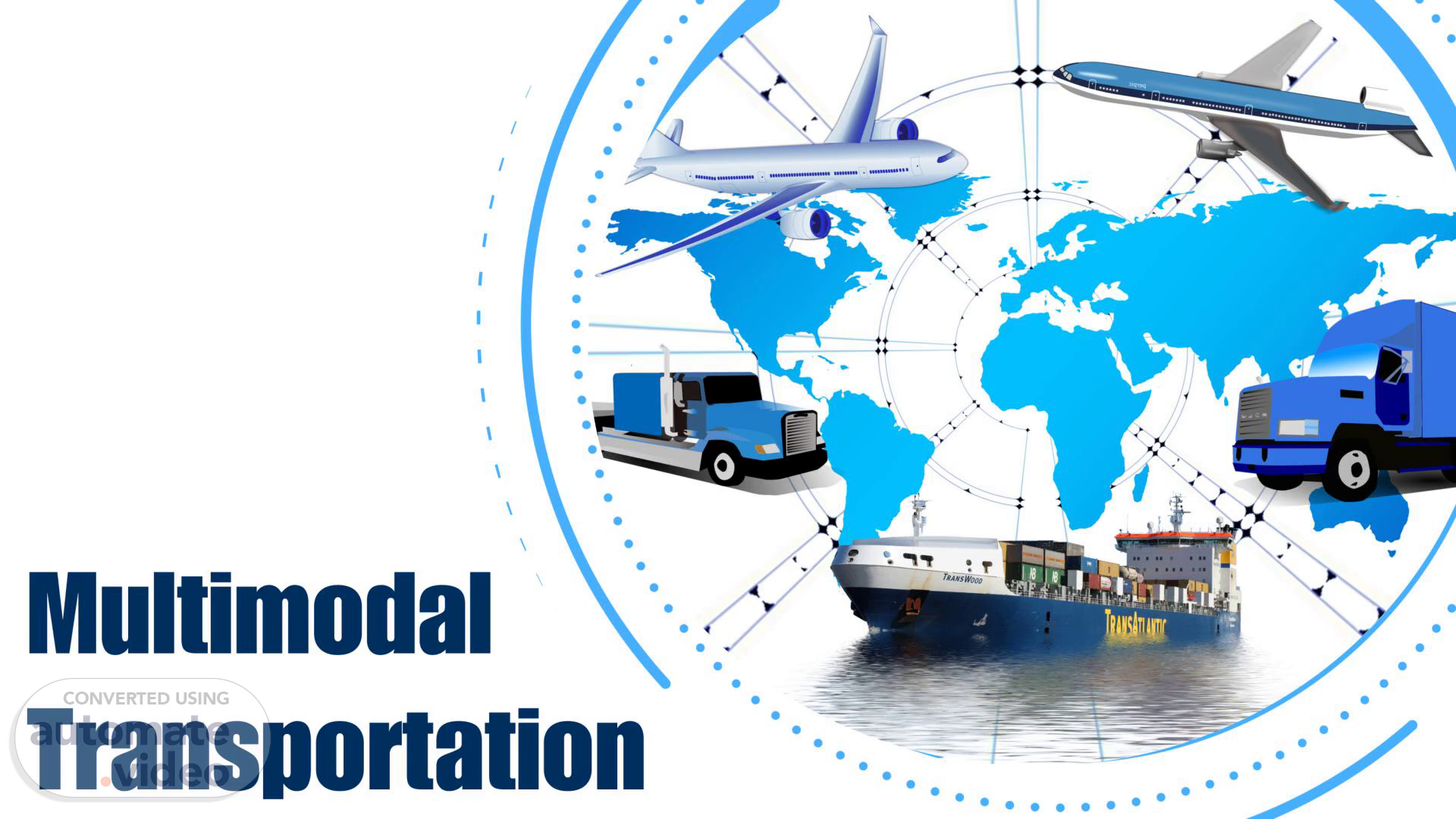Scene 1 (0s)
Multimodal Transportation.
Scene 2 (5s)
Introduction Multi-modal transportation combines two or more modes of transport— like road, rail, air, or sea—within a single journey to move goods or people more efficiently. By using each mode for the part of the journey where it's most effective, multi-modal transport improves speed, reduces costs, and minimizes environmental impact, making it essential for global logistics and sustainable transportation..
Scene 3 (23s)
What is multimodal transportation Multi-modal transportation involves using multiple modes of transport—such as trucks, trains, ships, and planes—in a coordinated journey to move goods or people from one place to another. Each mode is used strategically for specific parts of the journey, allowing for greater efficiency and cost-effectiveness. For example, goods may be shipped overseas, transferred to rail for inland travel, and then delivered by truck for the last mile. This approach optimizes the strengths of each transport mode, leading to faster delivery times, reduced congestion, and lower emissions. Multi-modal transportation is widely used in global logistics and urban planning, helping to create sustainable and flexible transportation networks that meet modern demands while minimizing environmental impact..
Scene 4 (53s)
Importance of multimodel transportation Multimedia transportation is essential for delivering audio, video, and other media over networks, supporting real-time communication, entertainment, and education, and enabling global connectivity in areas like telemedicine, e-learning, and streaming services. Here some key points for importance of multimodel transportation, Improved efficiency Cost savings Environmental benefits Enhanced flexibility Reduced urban congestion Supports global trade Improved accessibility.
Scene 5 (1m 11s)
Improved Efficiency Using multiple modes allows for optimized routes, reducing overall transit time and improving delivery schedules. Cost savings Multi-modal systems transport by choosing each leg of the journey. allow for more cost-effective the most economical mode for Environmental Benefits Combining modes, such as rail or sea for long distances and trucks for local delivery, reduces fuel consumption and emissions, supporting sustainability goals. Enhanced Flexibility Multi-modal systems provide disruptions (e.g., weather or more resilient and adaptable. 1 alternatives in traffic), making case of logistics.
Scene 6 (1m 33s)
Reduce Urban Congestion By optimizing transportation routes and using different modes, multi-modal transport reduces congestion in cities, improving urban traffic flow. Supports Global Trade Multi-modal systems are essential for complex global supply chains, enabling efficient international shipments across various regions. Improved Accessibility Multi-modal transport connects remote or underserved areas by integrating various transportation modes, facilitating easier access to goods and services..
Scene 7 (1m 51s)
Conclusion Multimodal transportation combines various transport modes—like road, rail, and sea—to create more efficient, cost-effective, and environmentally friendly logistics. This approach uses the strengths of each mode, making the movement of goods and people faster, more reliable, and adaptable to changing demands..
Scene 8 (2m 6s)
THANK you SHERIN SHANEL T.
